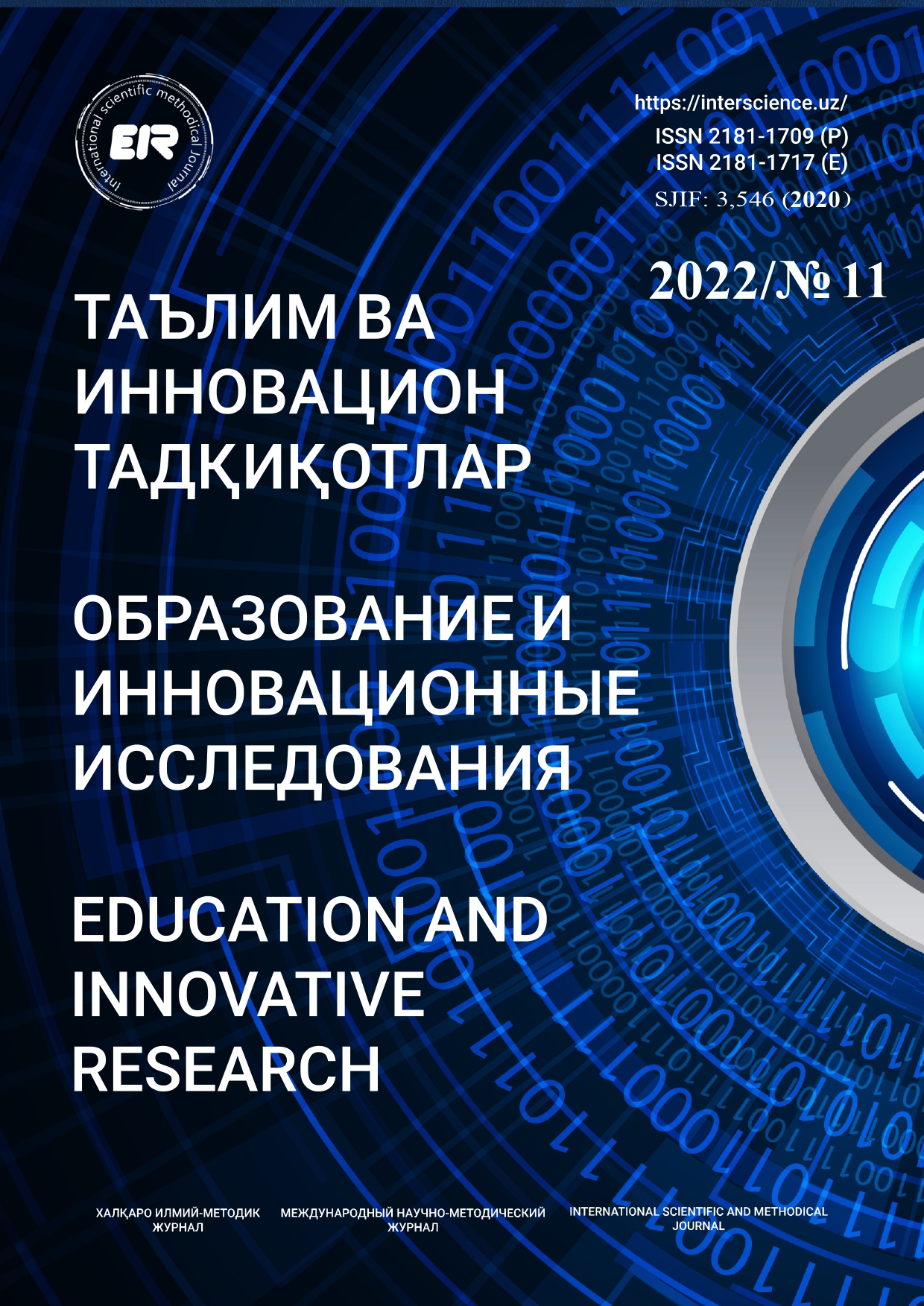ИСПОЛЬЗОВАНИЕ ПРАВИЛА ИНТЕГРИРОВАНИЯ ПРИ РЕШЕНИИ ЗАДАЧ ПО ФИЗИКЕ
Хусанов Зафар Журакулович, доктор философских наук (PhD) доцент кафедры “Общая физика” Навоийского государственного горно-технологического университета
Ключевые слова:
: физика, преподавание естественных наук, решение проблем, механика, лабораторные занятия, фронтальная лабораторная работа, эффективность обученияАннотация
В статье рассматриваются вопросы, связанные с методом решения задач по физике. Хотя сущность физических явлений объясняется учащимся различными методами или методологиями, существует определенная методология решения проблем. Если какая-то величина изменяется во времени в процессе данного явления, то при решении задачи используется метод интегрирования. А также Значение выполнения практических занятий по физике для повышения эффективности преподавания естествознания. Во многих случаях величины меняются не только во времени, но и в зависимости от других параметров. Как правило, величина, которая изменяется в процессе рассматриваемого события, определяется по этому параметру, и для определения конечного результата требуются минимальный и максимальный интервалы события и интеграция. В задачах, решаемых интегральным методом, исследуются физические процессы явлений реального состояния. Это позволяет студентам и учащимся более полно понять физическое явление, проявленное в задаче.
Библиографические ссылки
Jalolov J. Chet tili o‘qitish metodikasi. – T.: 2012. – 427 b. 2. Зимняя И.А. Педагогическая психология: учебник для вузов. 3-е издание, присмотренное. – Москва: 2010. – 448 с. – С. 410-413. 3. Karimova V.M. Psixologiya. O‘quv qo‘llanma. – Toshkent: T.A.Qodiriy nomidagi xalq merosi nashriyoti, “O‘AJBNT” markazi, 2002. – 205 b. 4. Леонтев А.Н. Деятельност. Сознание. Личность: Учебное пособие. 2-е изд., стереотипное. – М.: Смысл: Академия, 2005. – 352 с.
Маклаков А.Г. Общая психология: Учебник для вузов / – Санкт-Петербург: Питер, 2010. – 583 с. – С.512.
Маслоу А. Мотивация и личность. Электрон ресурс: http://psylib.org.ua/ books/masla01/index.htm
Немов Р.С. Психология в 3 книгах. Книга 1. Общие основы психолгии. Учебник. – М.: Владос, 2010. – 687 с.
Ньюстром, Дж.В., Дэвис, К. Организационное поведение / Дж.В.Ньюстром. К.Дэвис. – перевод с англ, под ред. Ю.Н. Каптуревского. – СПб.: Питер, 2000. - 448 с. 9. Pedagogika: ensiklopediya. II jild / tuzuvchilar: jamoa. – Toshkent: “O‘zbekiston milliy ensiklopediyasi” Davlat ilmiy nashriyoti, 2015. – 376 b. 10. Pedagogue. Merriam-Webster.com. Dictionary, 2018. Elektron resurs: https:// www.merriam-webster.com/dictionary/pedagogue. 11. Рогова Г.В. Методика обучения иностранным языкам в средней школе. – М.: Просвещение, 1991. – 287 с. – С. 5. 12. Рубинштейн С.Л. Основы общей психологии. – СПб.: Питер, 2002. – 720 с. 13. Ryan, R., & Deci, E. (2000). Intrinsic and extrinsic motivations: Classic definitions and New directions. Contemporary Educational Psychology, 25, 54-67.
doi:10.1006/ceps.1999. 1020. 14. Samatova B.R. Ingliz tilini o‘qitishda nofilologik yo‘nalish talabalarining
motivatsiyasi (yurisprudensiya yo‘nalishi misolida). P.f.f.d.dis. – Toshkent, 2020. – B. 15. – 172 b.
Slavin, R, E. (2012). Educational psychology. New York: Pearson. 16. Wigfield, A., Eccles, J. S., & Rodriguez, D. (1998). The development of children’s motivation in school contexts. Review of Research in Education, 23, 73- 118.





